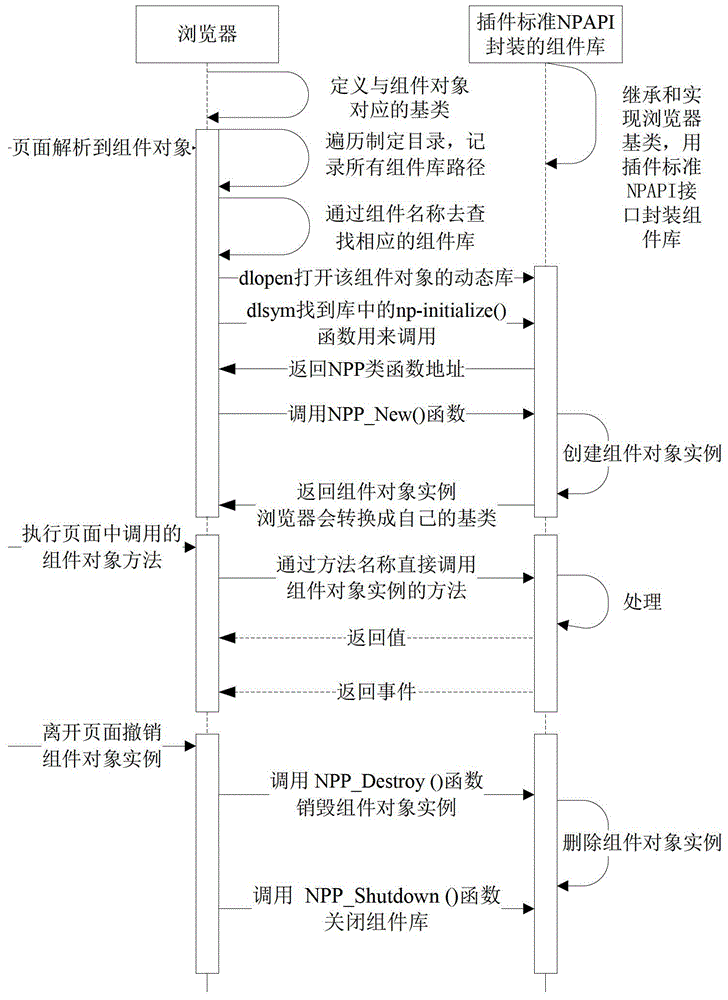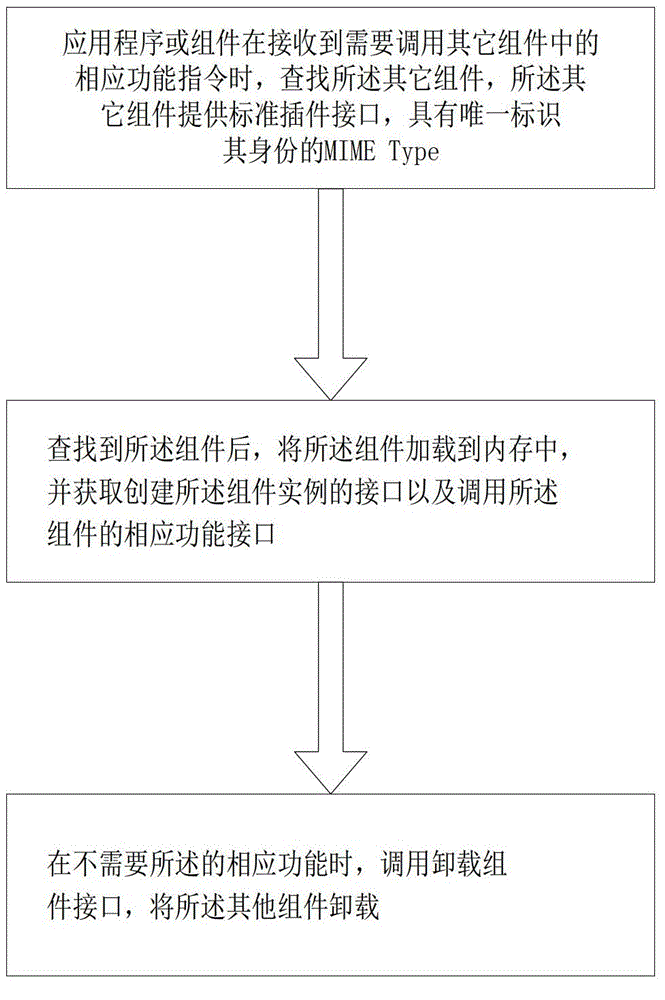Dynamic component loading method and system based on plug-in mechanism
A dynamic loading and component technology, applied in the direction of program loading/starting, program control devices, etc., can solve the problems of memory consumption, heavy maintenance workload of middleware or application software, and limitation of general-purpose software, and achieve the effect of improving versatility
- Summary
- Abstract
- Description
- Claims
- Application Information
AI Technical Summary
Problems solved by technology
Method used
Image
Examples
Embodiment 1
[0065] Embodiments of the present invention include the following steps:
[0066] Step 1, configure a "MIME Type" that can uniquely identify its identity for each component.
[0067] Step 2: When the application program or other components receive the instruction to call the corresponding functions of other components, they search for the components by traversing the feature interfaces of the component libraries in the specified directory in the system; the order of the traversal means is not limited.
[0068] Step 3, if the component exists, load the component into the memory, obtain the component instance, and call the plug-in standard NPAPI interface of the encapsulated component;
[0069] Step 4, when exiting the corresponding function module, unload the component and release the memory.
[0070] Among them, the "MIME Type" that uniquely identifies the identity of the component can use the following methods:
[0071] Set the "MIME Type" that uniquely identifies the compo...
Embodiment 2
[0074] The method of the embodiment of the present invention is further elaborated below through a preferred embodiment:
[0075] figure 1 It is a schematic flow diagram of the embedded browser dynamically searching and loading components in the embodiment of the present invention. Take the embedded browser as the specific application program. The current webpage has become the mainstream portal navigation in the embedded system due to its cross-platform and easy deployment features. The embedded browser is the core of parsing the webpage. Different business systems have different requirements and need to load the functions of different components. For example, for dual-mode The set-top box needs to use the DVB component library, but the Internet set-top box does not need the DVB component library. Through the method of the embodiment of the present invention, the embedded browser can dynamically discover and load local functional components without compiling different versi...
PUM
 Login to View More
Login to View More Abstract
Description
Claims
Application Information
 Login to View More
Login to View More - R&D
- Intellectual Property
- Life Sciences
- Materials
- Tech Scout
- Unparalleled Data Quality
- Higher Quality Content
- 60% Fewer Hallucinations
Browse by: Latest US Patents, China's latest patents, Technical Efficacy Thesaurus, Application Domain, Technology Topic, Popular Technical Reports.
© 2025 PatSnap. All rights reserved.Legal|Privacy policy|Modern Slavery Act Transparency Statement|Sitemap|About US| Contact US: help@patsnap.com


